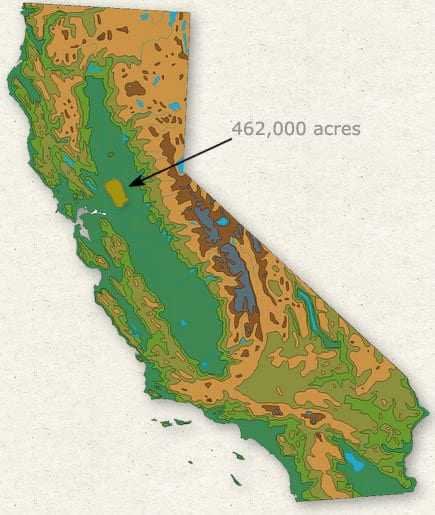
In a few weeks, a public hearing will be held in Washington by the United States International Trade Commission on the “competition conditions” between American olive oil producers and major foreign suppliers. The investigation was launched at the request of House Ways and Means Committee Chairman Dave Camp.
Waiting in the wings is a proposed federal marketing order drafted by California producers hoping to place new hurdles for imported olive oils while clearing an easier path for their own. Both sides are lawyering up for what should be an intense fight.
Domestic olive oil producers currently supply less than 2 ½ percent of what Americans consume — nearly 98 percent is imported — and it has been widely reported, including in these pages, that American producers could some day supply 5 percent. But would there be such a vicious fight over just another 2 ½ percent (a mere 8,000 tons)?
It turns out the answer is no. There’s a lot more at stake than the widely-reported 5 percent and both sides know it.
According to a California olive oil industry source, local industry players have set their sights on providing much more than 5 percent of domestic needs. In fact, they don’t deem it entirely impossible that all of the olive oil Americans need could eventually be supplied by U.S. producers.
In round numbers, Americans will consume 280,000 tons of olive oil this year, or 74 million gallons, making it the world’s largest market outside of Europe. A modern high-density farm can produce 160 gallons per acre, so you would need approximately 462,000 acres to make that much olive oil.
Sounds like a lot? Well it is, and it isn’t. Consider this: There are more than 800,000 acres devoted to almonds alone in California. And the Spanish olive oil producer Hojiblanca estimates that its holdings will soon reach 1.2 million acres.
Suddenly 462,000 acres seems within reach, especially if you throw in a few tracts from Georgia, Arizona and Texas. In fact, it looks something like this:

So it is no wonder European producers are up in arms, demanding action at the highest levels over what they see as American efforts to construct trade barriers. Americans say they are only seeking to “level the playing field.” What some industry players might really be after, though, is more like a 462,000-acre “field of dreams.”
